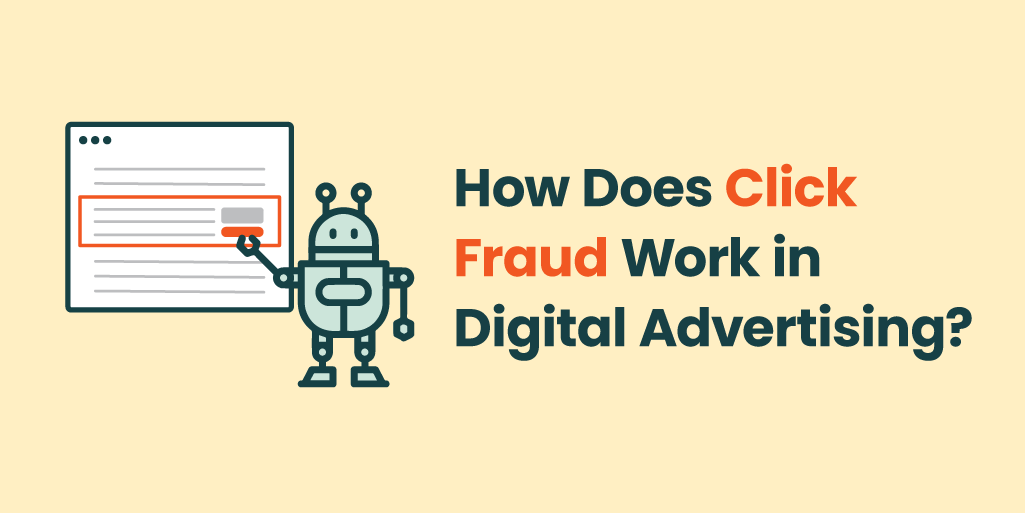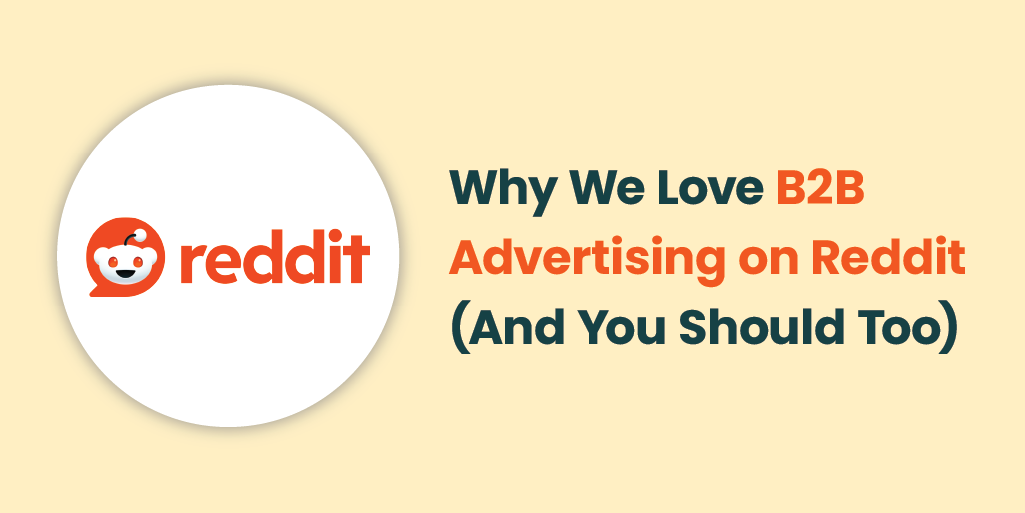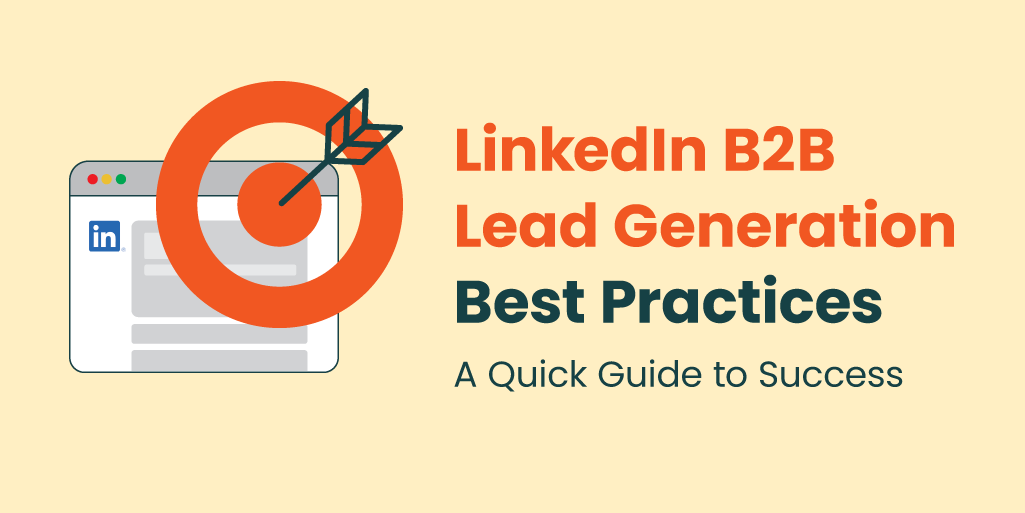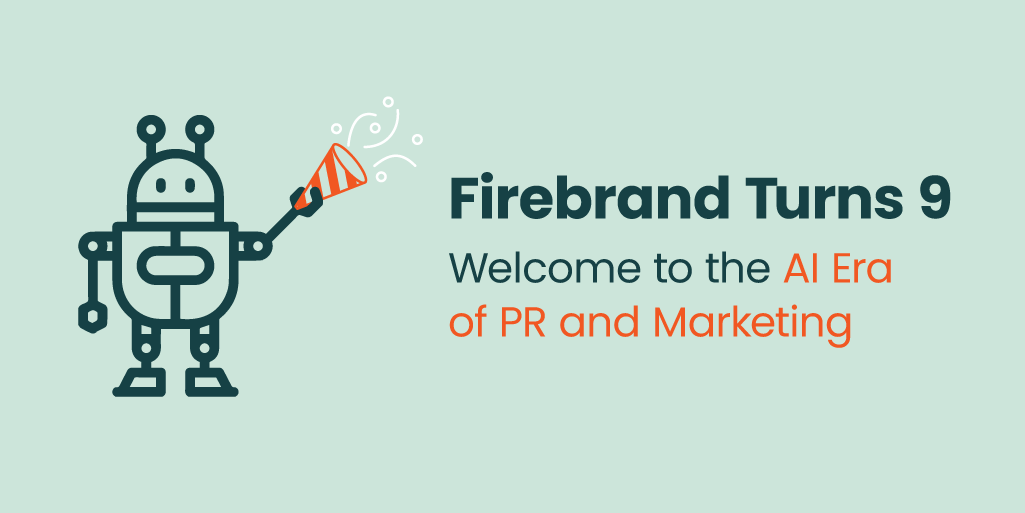Digital advertising offers an unmatched ability for advertisers both large and small to scale their efforts and achieve measurable results. But with such opportunity comes risk. Click fraud, along with its more advanced counterpart, lead generation (lead gen) fraud, remains one of the most persistent challenges advertisers face today. These forms of fraud can drain budgets, distort performance metrics, and erode campaign integrity.
As digital ad spending continues to rise, so too does the sophistication of fraudsters, making it more critical than ever for marketers to understand and combat these evolving threats.
What is Click Fraud?
Click fraud occurs when individuals, bots, or automated scripts click on paid ads with no genuine intent to engage, convert, or purchase. Lead gen fraud follows a similar playbook, but goes a step further: fraudsters fill out lead forms using fake or stolen information.
The goal of both tactics is often to:
- Generate illegitimate revenue through a fraudster-owned site via an ad network.
- Appear as a legitimate user to be added to remarketing lists or gain future engagement opportunities.
The Impact of Advertising Fraud
Click and lead gen fraud create multiple layers of harm for advertisers:
1. Wasted Budget
Billions of dollars are lost annually to fraudulent activity. During a recent episode of our podcast FiredUp!, Anura co-founder and CEO Rich Kahn said fraudsters stole $140 billion out of the $700 billion spent on digital ads last year. This directly undermines return on ad spend (ROAS) and diminishes overall marketing efficiency.
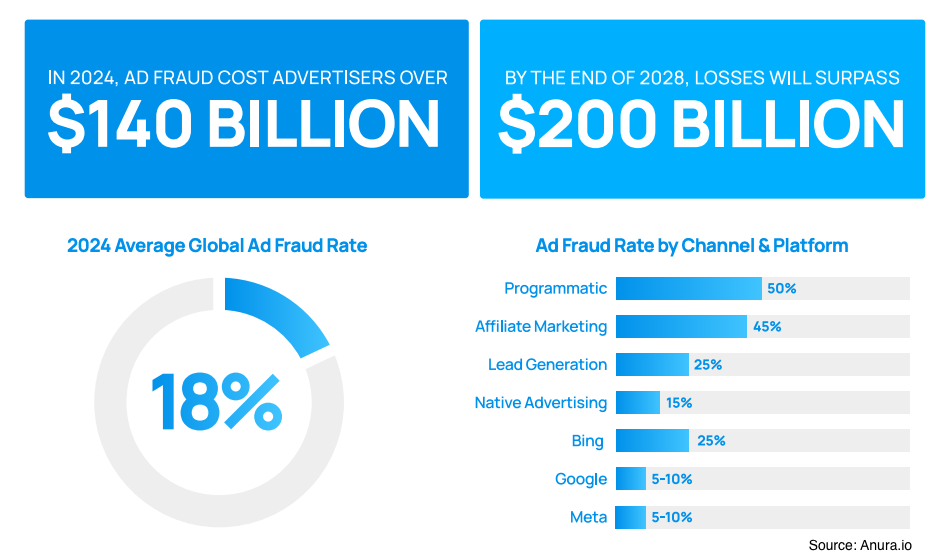
2. Distorted Analytics
Fraud skews key campaign metrics such as click-through rate (CTR), conversion rate, and cost per acquisition (CPA). This leads to poor optimization decisions and further compounds losses over time.
3. Sales and Operational Inefficiency
Fake leads clog sales pipelines and waste your team’s time. Reps end up pursuing bogus prospects, leading to frustration and missed genuine opportunities.
4. Customer Data Quality Issues
Fraudulent or fake submissions pollute your CRM and analytics platforms, reducing the effectiveness of future campaigns; particularly those involving retargeting and lookalike audiences.
5. Bid Strategy Distortion
Algorithmic bidding systems may mistakenly optimize for fraudulent placements, creating a costly feedback loop and wasting additional budget.
Click Fraud Prevention: The Steps You Need to Take
While digital fraud is an ongoing game of cat and mouse, marketers are far from powerless. Here are some click fraud protection best practices to reduce exposure:
1. Implement Ad Verification and Click Fraud Detection Tools
Partner with trusted click fraud detection platforms like Clickcease, DoubleVerify, IAS, Moat, Anura, or CHEQ (which is what we rely on here at Firebrand). These platforms use behavioral modeling and machine learning to detect suspicious activity in real time.
Below is an example of Clickcease, a product from CHEQ, which enables us to monitor and block traffic from Google, Meta and Microsoft sources. With a host of features, it allows us to set click fraud thresholds for specific actions, prevent VPN users, perform behavior analysis and more.
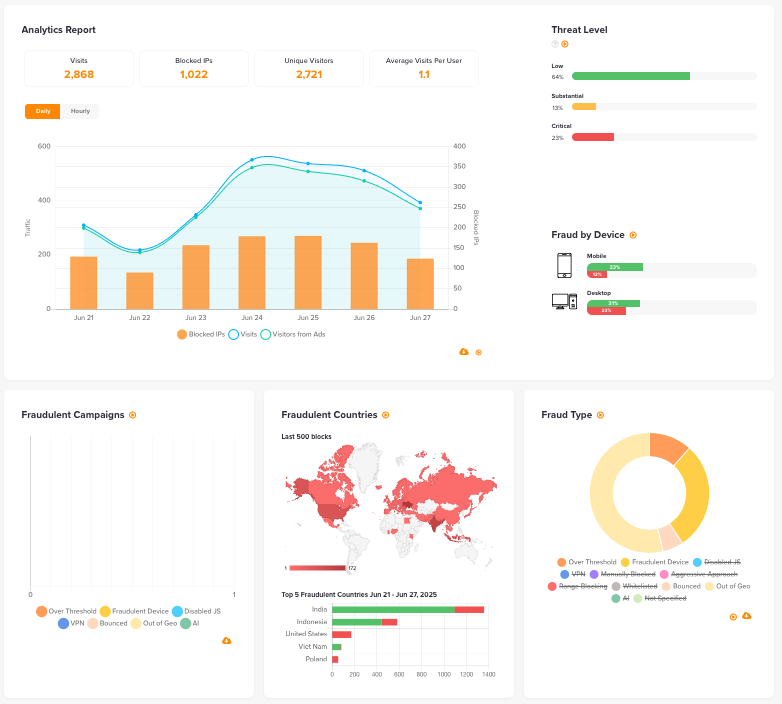
Overview of the Clickcease Dashboard
2. Click Fraud Monitoring on Traffic and Behavioral Patterns
Watch for common fraud indicators, such as:
- High CTR with little or no conversions
- Traffic from unexpected or low-value geographies
- Unusual time-on-site patterns
- “Too good to be true” conversion ratios
- Sudden changes in the performance of ad campaigns
Analyzing data at the network and placement level can help uncover fraud early.
3. Use CAPTCHAs and Lead Validation
Introducing light friction like CAPTCHA challenges or double opt-ins can help filter out bots. Use third-party lead validation tools to verify submissions via:
- Email and phone validation
- Data enrichment
- Fraud scoring systems
4. Avoid Low-Quality Traffic Sources
Be wary of third-party affiliates, pay-per-lead networks, or overly aggressive programmatic buys. For instance, the Google Display network offers a number of off-platform partners, which can have a disproportionately high fraud level. Prioritizing high-intent, first-party, or direct traffic sources typically results in higher quality leads and better ROI.
5. Set Clear Contracts with Vendors
If you rely on external partners for leads, establish transparency in sourcing methods, perform regular lead audits, and ensure refund or replacement policies are in place for invalid leads.
Get Started on Preventing Click Fraud Today
Click and lead gen fraud isn’t just a minor inconvenience it’s a serious business risk that can quietly erode your marketing performance and ROI. As digital advertising continues to evolve, so must our vigilance.
By combining smart data analysis, advanced click fraud detection tools, and transparent media practices, marketers can protect their investments and ensure campaigns reach real, relevant audiences.
Fraudsters may be sophisticated, but a well-informed advertiser is their toughest adversary.
If you want to go beyond a 101-level understanding of click fraud, check out the latest FiredUp! podcast, where we sit down with Anura.io Co-Founder & CEO Rich Kahn for an in-depth conversation about the growing challenges of click fraud and the practical steps advertisers can take to combat it.
About the Author
Patrick Brady is the Director of Paid Media at Firebrand. With over 15 years of experience he helps lead digital clients through the ever changing world of online advertising. Prior to Firebrand, he led PPC efforts for multiple Fortune 500 companies across the B2B and B2C space.

